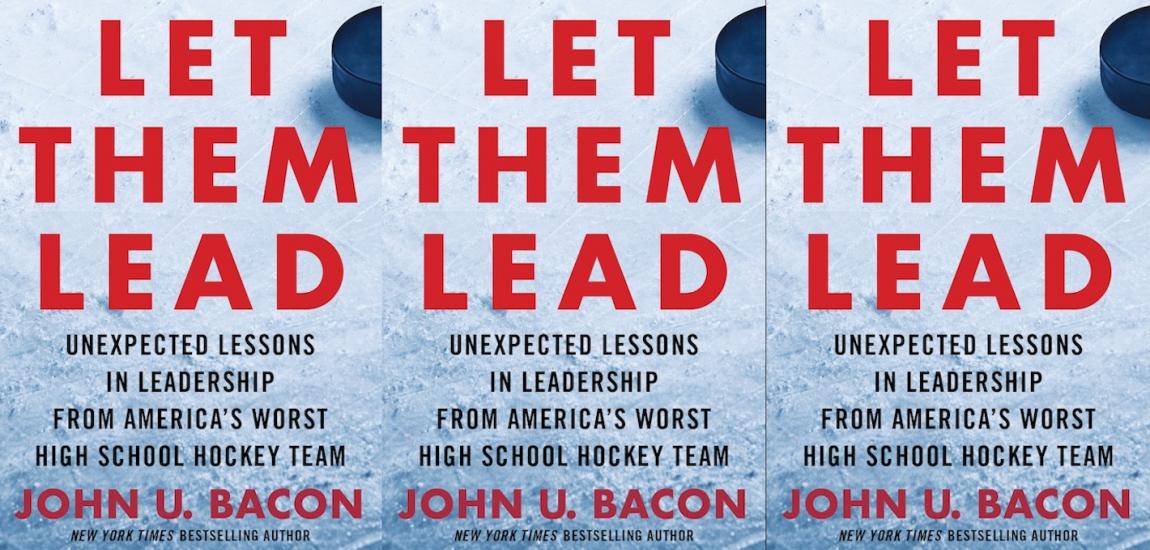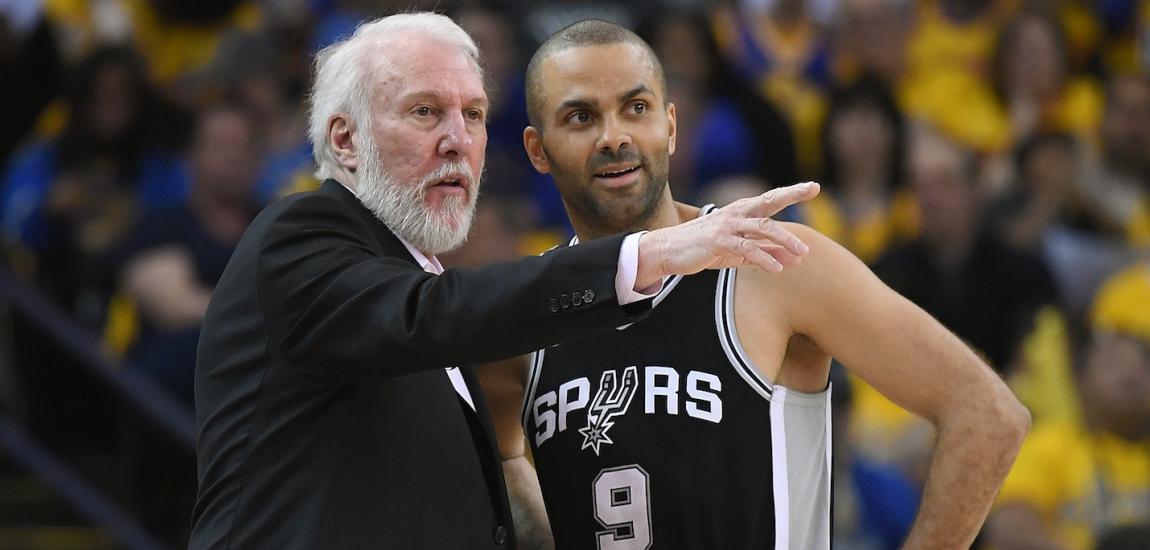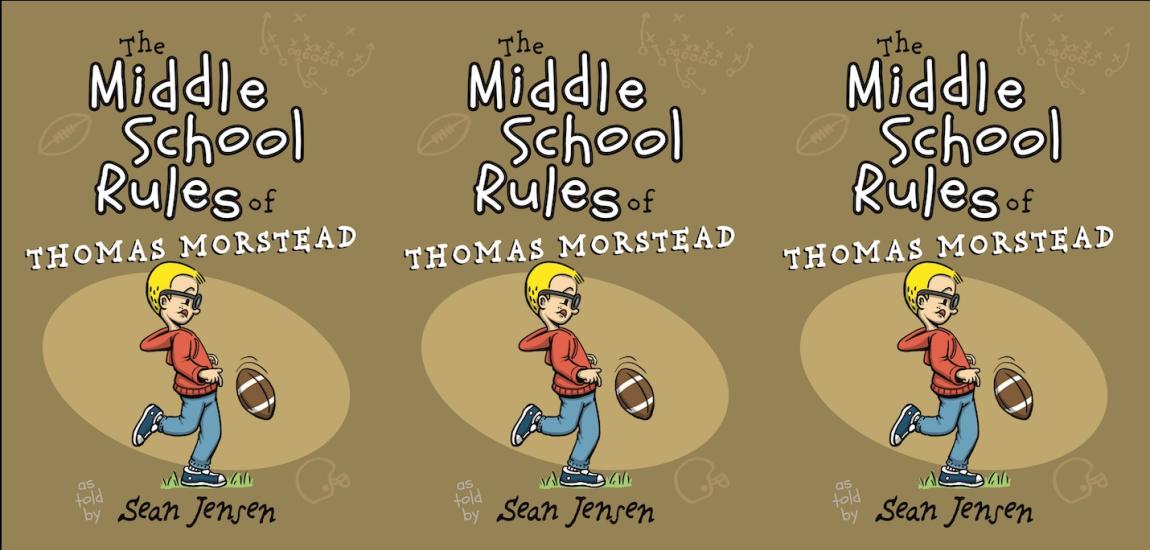On August 29, 1977, Indians second baseman Duane Kuiper hit a home run off Steve Stone of the White Sox. Nearly four decades later, that homer is still holds a special place in baseball history. It is the subject of this column by ESPN's Jayson Stark in a new collection of his work titled Wild Pitches.
You think it's hard to hit 755 home runs? Let's talk about a feat that’s just as hard:
Hitting one home run.
And only one.
In 3,379 at-bats.
Now, you may think we're only tossing a crazy statement like that out there as some cheap stunt to get your attention. But this is one cheap stunt we can back up with actual facts.
And the actual facts tell us there are more members in the 750 Homer Club (two) than there are in the One Homer in 3,000 At-Bats Club (one).
Feel free to look that up.
So at a time when we were interrupting pretty much all our regularly scheduled programming to commemorate a man who hit more home runs than anyone else who ever lived, shouldn’t we be fair? And just? And balanced?
Shouldn’t we devote at least one minor piece of literature to the man who has made history in the most diametrically opposite way possible?
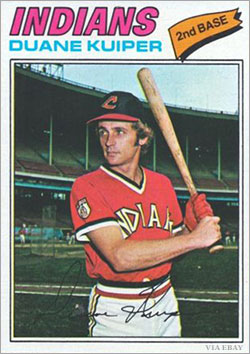
Well, of course we should. So here's to the King of Not Hitting Homers.
Here’s to Duane Eugene Kuiper -- for 12 seasons a sure-handed, not-so-power-packed big-league second baseman, and now (irony of ironies) a terrific broadcaster for those San Francisco (Home of Barry) Giants.
The Home Run Made Duane Kuiper Famous. So mark your calendars.
Who among us will ever forget it?
OK, so the answer to that is: just about everybody. But not Duane Kuiper himself, naturally. He has retold this tale a whole lot more than 755 times since then. That’s for darned sure.
He was playing second base for the Indians back then, in only his third full season in the big leagues. He stepped in to hit against White Sox pitcher Steve Stone in the first inning of a game at old Cleveland Municipal Stadium.
Only 6,236 witnesses were on hand. We’re sure millions more wish they were.
"I remember I hit it, and I saw Wayne Nordhagen, the right fielder, running after it, and I saw his number,” Kuiper reminisced. “And I never saw a right fielder’s number. I saw him running back, and I said, “You know what? This is going to go out.’”
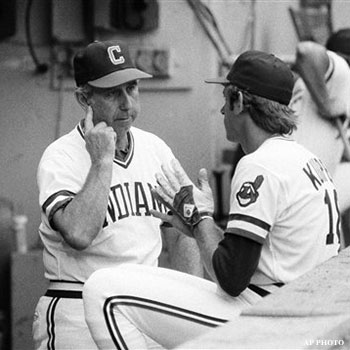
That’s a thought that didn’t exactly race through Kuiper’s brain every time he swung the bat, you understand. So pay attention -- because, in fact, this ball did go out. Way out. Deep into the third row. Or possibly the fourth.
But the precise location isn’t important now. What’s important is that the historic baseball clattered off (what else?) an empty seat and caromed back onto the field.
So Wayne Nordhagen, astutely recognizing that this was a guy who was capable of playing eight more seasons without ever hitting another home run, picked up the ball and fired it toward the Cleveland dugout. Which means Duane Kuiper got to save the baseball.
But that’s not all he saved.
As he was leaving the dugout to head for the plate a second time that night, his teammate, Bill Melton, said to him, "You’re not going to use that bat again, are you?"
“So I said, ‘Yeah, why not?’” Kuiper recalled. “He said, ‘You may not hit another one. You ought to put that one away.’ Well, I didn’t know he was telling the truth. But I tried to bunt for a hit my next time up, and then I did put my bat away. Never used it again."
Instead, he gave the bat and the ball to the equipment manager, who had them mounted together, with a plaque that read Duane Kuiper’s first major-league home run. A few years later, a clairvoyant teammate grabbed a marker and added the fateful words, “and only," on there. But that’s not important, either.
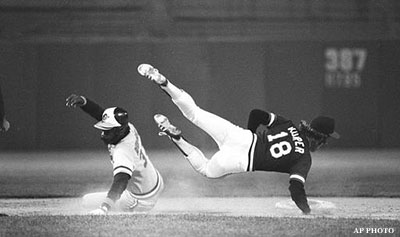
What's important is that Kuiper has the ball and the bat. You'd think he'd have sent them off to Cooperstown years ago. But mysteriously, Cooperstown has never asked. So Duane Kuiper knows just where to look any time he wants to savor his magic moment.
“Yeah, in the attic," he laughed. "It's mounted in the attic. It would probably take me 10 minutes to get to it, but I have a general idea where it's at."
Meanwhile, we still have the general idea that you, our loyal audience, don’t yet comprehend the cosmic significance of the home run that plaque has preserved. So let’s pause for a brief history lesson:
- In the 62 seasons since World War II, no other members of the One Homer in Their Whole Darned Career Club have even come within 1,000 at-bats of Duane Kuiper’s lifetime total. And just two one-homer men even made it to 2,000 career at-bats: Woody Woodward (one in 2,187 at-bats) and Al Newman (one in 2,107).
- In that same time span, every other player who batted as many times as Kuiper managed to hit at least five home runs -- with the exception of longtime pinger Frank Taveras (who hit two).
- And even if we take in all of baseball's eras -- live-ball, dead-ball, gloves-without-fingers, mound-45-feet-from-home-plate, etc. -- you'd still have to go back to 1886 (to the retirement of the mysterious Davy Force) to find another player who hit just one homer and came within 450 at-bats of getting as many shots to hit one as Kuiper did.
So there. Impressed yet?
No wonder Kuiper hung onto the bat and the ball -- and the seat, too, for that matter. The Indians gave him the seat after they traded him to the Giants in 1982. And where can you find that historic seat now? In his garage, where it has been residing since he hauled it in from his yard because the paint started cracking.
"I like to say that I hit it so hard, the ball cracked the top of the seat," Kuiper quipped. “But it doesn’t look like that happened."

At the time that home run hit that seat, it was too early in Kuiper’s career for him, or anyone, to have the proper perspective on what that mighty blast represented. That home run left the yard in 1977. But Kuiper didn’t leave the playing field himself until 1985. So he racked up another 1,997 at-bats in his day, every one of them 100 percent trot-free.
In all that time, he said, there were barely even any close calls. But there was one near-miss he’ll never forget -- a triple off the top of the fence in 1981.
And the reason Kuiper will never forget it is because the pitcher who gave it up happened to be the same guy who had served up The Homer -- Steve Stone.
"I remember standing on third, looking at Stoney's face, and I realized that [having the second ball not go out] was a good thing,” Kuiper said, at his sympathetic best. "To have two in your whole life -- and have them both off the same guy -- that would have been rough. Plus Stoney was born in Cleveland. His parents lived there. He did not need to hear all that crap."
Nope, sure didn't. So instead, all the crap was reserved for Kuiper himself.
As the seasons and at-bats mounted -- but the homer total didn't -- he heard it all from America’s most compassionate fans, folks who obviously didn't sufficiently appreciate the art of not homering.
But Duane Kuiper appreciated it. And that’s what mattered. He knew exactly what he was and exactly what he wasn’t. And while Hank Aaron reincarnate was what he wasn't, he never did see any problem with that.
"You know, when I got to the big leagues, [manager] Frank Robinson pulled me aside,” Kuiper said. “And he said, ‘I’ll give you 10 at-bats. If you hit more than two balls in the air, I’ll send you back to Triple A.’ I kind of laughed. And he said, ‘This is not a joke. I will send your ass back to Triple A.' Because I could run, and his whole idea was: hit the ball in the hole and make the shortstop throw you out. And that was the stroke that kept me in the big leagues.
“Of course,” Duane Kuiper couldn’t help but add, “I kind of had that stroke anyway."
Did he think about what he might do or say if he ever hit another homer?
Sure he did. But does it bug him, even a little bit, that he never hit another homer? Not for one second.
"There's something special about one," Kuiper philosophized. "There's not a whole lot special about two. I mean, nobody ever keeps their second major league hit."
-- Excerpted by permission from Wild Pitches by Jayson Stark. Copyright (c) 2014 by Jayson Stark. Published by Triumph Books. All rights reserved. No part of this excerpt may be reproduced or reprinted without permission in writing from the publisher. Available for purchase from the publisher, Amazon, Barnes & Noble and iTunes. Follow Jayson Stark on Twitter @jaysonst.



